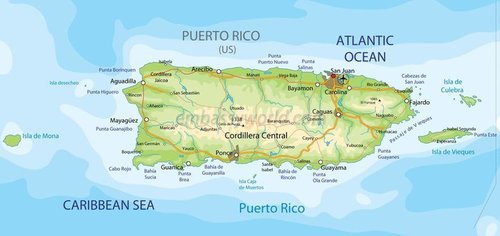
Uncovered: Puerto Rico’s PISA Scores (They’re Horrific)
08/03/2015
With Puerto Rico in the news for threatening to go broke, Paul Krugman is worried that hedge funds want to “destroy the island’s education system in the name of fiscal responsibility.” But it turns out that Puerto Rican school administrators have largely done that already. Although Puerto Rico spends more per public school student than Utah and Idaho, and more per student on certain obscure but lucrative categories of school administration than any of the 50 states, its test scores are horrific.
It’s interesting to discover that Puerto Rico actually participated — on a preliminary basis — in the 2012 international PISA test of 15-year-olds, although PR’s scores were not released in 2013 like most places’ were.
Instead, a report on Puerto Rico’s PISA scores surfaced a half year later. This is similar to how quietly Puerto Rico’s scores on the federal NAEP test were released.
The PISA is scored like the SAT with an intended average (in wealthy OECD countries) of 500 and a standard deviation of 100.
As on the NAEP, Puerto Rico did really bad on the Math portion of the PISA, worse than Jordan, and better than only Colombia, Qatar, Indonesia, and Peru. (No doubt there are countries that would score worse than Peru, but they don’t participate in PISA.)
Puerto Rico averaged a 382, 99 points or about a standard deviation behind the U.S.’s 481.

On PISA’s 0 to 6 scale of proficiency in math, 34% of Puerto Rican students scored at the lowest (0) level, and not enough students out of the sample size of 1668 scored at any of the three highest levels (4 > 544, 5>607, or 6>669) to report a statistically reliable percentage.
I’m estimating 0.8% scored in any of the top three ranges. In contrast, almost 1/4th of U.S. students scored at the 4-6 levels.
Public schools in Puerto Rico are notoriously ineffectual and corruptly administered, so 23% of all students in the commonwealth are sent to private schools. The PISA test included private school students in its sample, however.
More math score details from the report:
The U.S. Hispanic average score (455) was significantly higher than the Puerto Rico average score (382) by 73 scale score points.The U.S. Hispanic female average score (450) was significantly higher than the Puerto Rico female average score (377) by 73 scale score points. Similarly, the U.S. Hispanic male average score (460) was significantly higher than the Puerto Rico male average score (387) by scale score points.
The U.S. Hispanic public school student average score (455) was significantly higher than the Puerto Rico public school student average score (370) by 85 scale score points. The U.S. Hispanic private school student average score (477) was significantly higher than the Puerto Rico private school student average score (424) by 53 scale score points.
Puerto Rico’s 10th percentile did badly, of course, but not superbad relative to other backwards places. Puerto Rico’s 90th percentile, however, scored as badly as the 90th percentile in any country.
This phenomenon of the Apathetic Elite seems more common in Latin America than most other places. For example, Mexico and Turkey are fairly similar overall, except that the really smart kids in Turkey, while relatively few in number, are still really smart, while Mexico just doesn’t seem to have much of a high end at all.
But Puerto Rico’s 90th percentile is way below even Mexico’s 90th percentile. My guess is that the high end Puerto Rican families get out of Puerto Rico, but that’s not particularly true for high end Mexicans, so I don’t know.
In defense of Puerto Rico, however, the test administrators rounded up a quite reasonable 91% of the 15-year-olds who were supposed to take the test, which is comparable to the coverage in the U.S., although not as good as in Finland or Netherlands. In contrast, Mexico somehow or other lost almost half of the youths who were supposed to take the test, and Costa Rica skimmed the cream even harder.
(Argentina’s miserable performance is related in part to the test administrators conscientiously rounding up about 4/5ths of the eligible youths. Conversely, Shanghai’s stratospheric scores may be related to test administrators not being all that diligent about rounding up the city’s huge population of children of proletarian migrants without legal permission to reside in Shanghai.)
Puerto Rico did slightly less awful on Science, scoring 401, 96 points behind the U.S. Two percent of Puerto Ricans scored at Level 4 on the 0 to 6 scale, versus 26% of Americans scoring 4, 5, or 6.
Puerto Rico did best in reading, scoring 404, which is 94 points behind the U.S.
